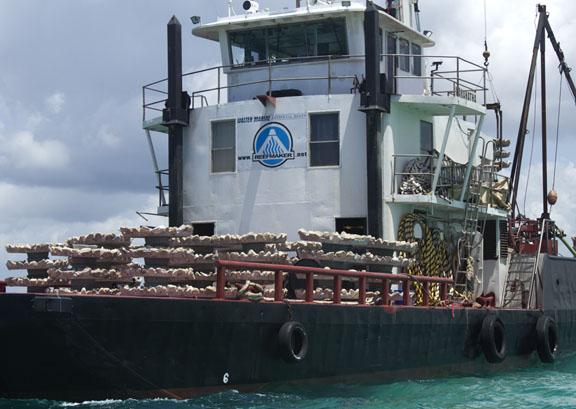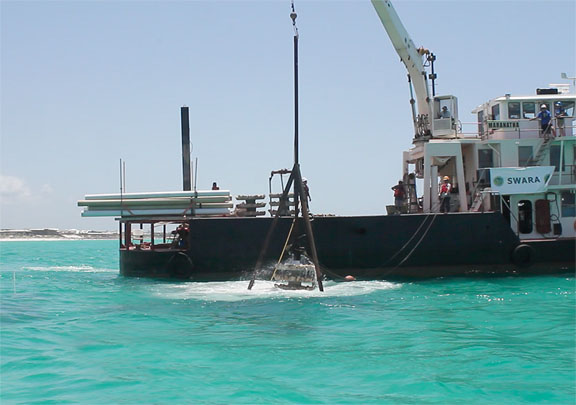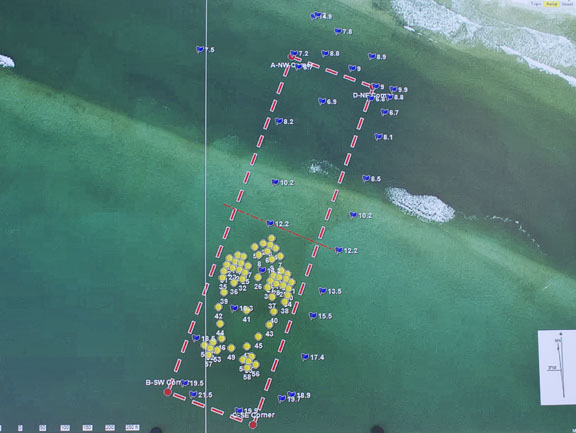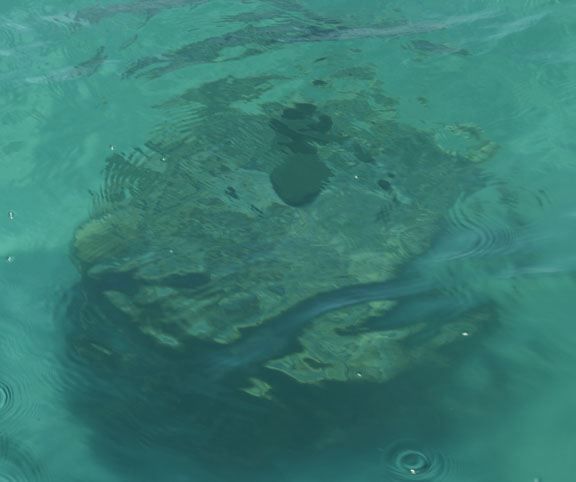
It’s official, South Walton has a new artificial reef, and it is in the shape of a sea turtle!
On Friday, July 10, 2015 the South Walton Artificial Reed Association (SWARA) deployed the first half of 58 artificial reef structures off of Grayton Beach State Park. This is the first of several snorkel and fishing reefs planned that will span across south Walton County.
Each reef structure is constructed with limestone rocks embedded in 5 ft. diameter concrete plates. Each reef boasts a 10″ diameter fiberglass piling sunk deep in the seabed and springing up to a maximum profile height of no more than 10 feet at the deepest water depth, resulting in a minimum authorized depth clearance of -6 feet at mean low water (MLW). The design is geared for snorkelers wanting to enjoy marine life close to shore. The reef structures are manufactured and deployed by Walter Marine Artificial Reefs out of Orange Beach, AL.

The 200′ wide x 800′ deep permitted reef site’s northern boundary is located approximately 350 ft. south of the Grayton Beach State Park shoreline. The location is outside the state park’s boundaries. For snorkelers, it is close enough to easily swim or paddle to. For divers, snorkelers, and anglers seeking to explore the waters off the coastline of South Walton, this will be a welcomed addition to recreation in Walton County.

Local resident Andy McAlexander came up with the idea of bringing beach accessible artificial reefs near shore in the Gulf of Mexico in Walton County back in 2013. As founder of the non-profit organization, SWARA, McAlexander together with board of directors Bill Horn, Patrick Murphy, Neill O’Connell, Jim Richard, Don Roberts, and Cindy Stenberg vigorously researched the benefits artificial reefs bring to our environment. With mentoring and guidance from the Mexico Beach Artificial Reef Association, SWARA developed a plan to install 13 environmentally safe reefs near shore in the Gulf of Mexico.
“I’ve never been more proud to be part of the community, everyone has been so positive and supportive of the project,” said McAlexander.

Plans were put in place, a “Founders” group provided funding for the lengthy permitting process, and in 2014, Walton County was allocated approximately $1,500,000 in National Resources Damage Assessment (NRDA) funds for deployment of artificial reefs. Once received, the NRDA funds will provide for about 16% of the total planned structural deployments. However, with summer upon us, and NRDA funds not yet received due to continued procedural delays, the Walton County Tourist Development Council and Board of County Commissioners voted to assist in speeding up the deployment process with $150,000 grant funding. This supplements funding support from the St. Joe Foundation and the Alys Foundation, which together funded the first set of reefs off of Grayton Beach State Park.

To learn more about SWARA, click here.
About artificial reefs:
Within hours of deploying a concrete reef, small fish move into their new home. This initiates a parade of marine life over several months. The hard structure of an artificial reef is slowly colonized by soft corals, sponges, plants, and barnacles. The smaller fish will soon have new neighbors, as snapper and grouper take residence. Nearby sand sediments come to life with sea stars, sand dollars, and other invertebrate species. Click here to learn more about the benefits of artificial reefs.
One month after deployment:
